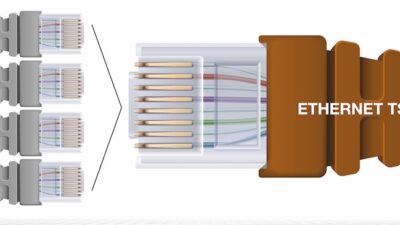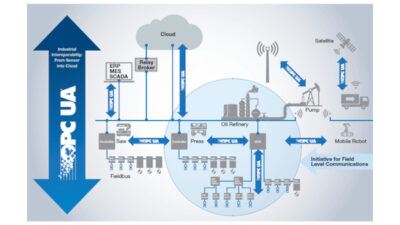Engineers usually want better performance from everything, but this year's Keithley Demanding Measurements Survey found they're demanding even more. The fourth annual study conducted by Keithley Instruments Inc. (Cleveland, O.) included input from 793 engineers and scientists surveyed in July and August.
Engineers usually want better performance from everything, but this year’s Keithley Demanding Measurements Survey found they’re demanding even more. The fourth annual study conducted by Keithley Instruments Inc. (Cleveland, O.) included input from 793 engineers and scientists surveyed in July and August.
The study, which charts trends and market needs for measurement products and technologies, found 1999’s most dramatic jumps occurred in required speed and resolution. Respondents needing more than 1,000 measurement readings/sec increased nearly two-thirds, from 19% of the market in 1998 to 31% in 1999. Likewise, engineers requiring 18 to 19+ bit (5-1/2digit) resolution or greater more than doubled, from 7% in 1998 to 18% in 1999. Meanwhile, though present accuracy needs of 0.10%+ of full scale or better only increased from 26% in 1998 to 28% in 1999, 53% of this year’s users projected they’ll need that level of accuracy in the next one to three years.
‘We’re accustomed to seeing engineers forecast dramatically higher requirements for their future measurement needs, and they certainly continued that tendency in this year’s study,’ says Joseph P. Keithley, the firm’s president, ceo, and board chairman. ‘What was remarkable, however, was the tremendous increase in today’s requirements for speed and resolution. It clearly documents what we hear anecdotally from our customers-that their new product programs or manufacturing processes require them to perform more measurements, more rapidly, and with greater precision.’
The study also found little change in remote measurement and data acquisition use from 1998 to this year. While 19% of respondents report ‘acquiring data from sensors located outside the plant, or in another building, city, or country’ in 1998, only 18% report using remote instruments in 1999. Though strong interest is again reported in remote measurements, with 60% predicting they’ll perform remote measurements in the next year, that figure is tempered by the fact that 1998’s forecast of 62% didn’t materialize.
‘Even though people are drawn to the concept of Ethernet- or Internet-based testing, it appears these measurements remain difficult and relatively expensive to perform,’ adds Mr. Keithley. ‘The market is willing, but simpler products and software solutions must be developed that remove these barriers, if this test is to become more than just an intention.’
Serial bus still on top
The persistence of traditional technologies was also revealed when the study showed that the long-predicted demise of serial bus seemed to be postponed for at least another year. Though many engineers predicted a rapid drop in its use, serial bus was reportedly used by 81% of respondents in 1999. IEEE-488 and 4-20 mA showed similar staying power, according to the survey.
However, while serial, GPIB, 4-20 mA, and Ethernet take up most of the market, USB is also being adopted rapidly, doubling to 15% in 1999 from 7% in 1998.
When asked why they selected these communication networks, users indicated that existing installations and hardware availability are driving network selection more than cost, ease of set up, and the need to span long distances did in the past. In short, if a particular network is already installed and compatible measurement hardware is available, then that network will be selected again.
‘Perhaps we shouldn’t be surprised at the resilience of the serial bus. It’s available on every PC and it’s free,’ says Mr. Keithley. ‘Users don’t have to purchase a card, they need no special drivers, and its hook-up-and-measure convenience is appealing to many low-level applications.’
PCI grows, ISA steady
Keithley’s survey discovered similar persistence by ISA backplanes, which haven’t declined as predicted last year in favor of PCI backplanes. In fact, ISA backplane use remains steady at 58%, even though it was overtaken by PCI in the backplane adoption race. PCI use grew 10 percentage points to 63% in 1999. Meanwhile, Compact PCI has not yet grown as much as expected.
The study also found that VXI was the only other backplane showing anticipated growth. It also secured the highest approval ratings, 3.8 out of 5, among the backplanes studied.
‘We see the strong results for GPIB and growth of PCI as linked. Growth in Compact PCI continues to be relatively unimportant, held back by the failure of major PC manufacturers to adopt it as a standard platform and the higher costs associated with this option. Simply put, GPIB solutions offer far more value, even for higher channel-count systems,’ adds Mr. Keithley.
Microsoft tools soar
When asked about operating systems and preferred programming languages and software tools, respondents report favoring open systems based on Microsoft tools. However, the market appears to have leapfrogged Windows 98, moving rapidly from Windows 95 to Windows NT/2000, which users expect to be the dominant software platform for measurement and data acquisition applications.
Every other operating system shows either a dramatic decline or projects no future growth. DOS is fading slowly, even though a third of existing applications are based on it.
Visual Basic and C/C++ are the dominant software choices by users, far ahead of any company-specific applications, according to the study.
For more information, visit www.controleng,com/freeinfo or www.keithley.com/whats_new .
Software Used by Engineers
| Software used now | In the future | ||
| 1998 | 1999 | ||
| DOS | 42% | 33% | 12% |
| Windows 3.1 | 30 | 20 | 6 |
| Windows 95 | 56 | 51 | 26 |
| Windows 98 | 6 | 30 | 31 |
| Windows NT/2000 | 37 | 44 | 58 |
| Unix | 19 | 20 | 15 |
| Mac | 6 | 5 | 3 |
| Source: Control Engineering with data from Keithley Instruments Inc. | |||
Buses Used by Engineers
| Buses used today | Projected future bus use | |||
| 1997 | 1998 | 1999 | +2000 | |
| Serial | 71% | 74% | 81% | 54% |
| IEEE-488 | 48 | 46 | 53 | 41 |
| 4-20 mA | 52 | 39 | 37 | 23 |
| Ethernet | 37 | 38 | 43 | 40 |
| USB | 7 | 7 | 15 | 24 |
| IEEE-488HS | – | 6 | 11 | 11 |
| HART | 7 | 7 | 10 | 6 |
| DeviceNet | 5 | 4 | 7 | 6 |
| Profibus | 1 | 3 | 6 | 4 |
| Firewire | 1 | 6 | 6 | 12 |
| Fieldbus H1 | 3 | 3 | 5 | 7 |
| Interbus | 3 | 2 | 4 | 4 |
| Source: Control Engineering with data from Keithley Instruments Inc. | ||||
Backplanes Used by Engineers
| Backplanes used now | In the future | ||
| 1998 | 1999 | ||
| PCI | 53% | 63% | 67% |
| ISA | 59 | 58 | 41 |
| CardBus | 25 | 24 | 13 |
| CompactPCI | 9 | 13 | 14 |
| VXI | – | 18 | 22 |
| Source: Control Engineering with data from Keithley Instruments Inc. | |||


